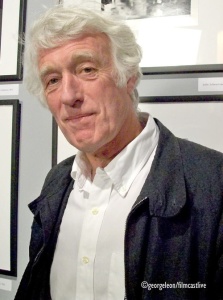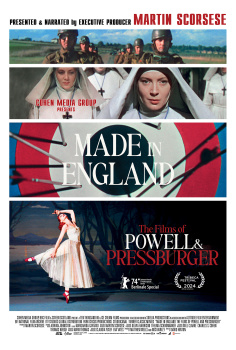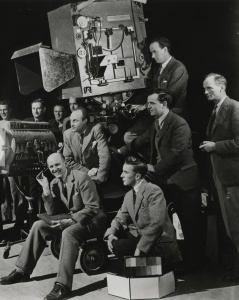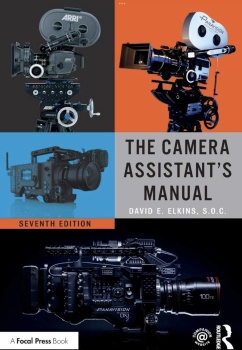The National Association of Broadcasters Show in Las Vegas is certainly the most important "global industry destination" if you want keep yourself abreast and informed of new broadcast technology, including education and services, and this year was no different. The registration to the NAB Show 2010 soared to over 88.000 plus registered attendees making a very crowded convention floor. This year, I met new manufacturing vendors offering the latest technology in equipment in all levels of the industry from production to post.
Las Vegas Convention Center at dusk
Gordon Smith, new President/CEO of NAB and two term Senator from Oregon opened the show on Monday addressing attendees and presenting the NAB Service Distinguished Award to Michael J. Fox for his commitment to raising awareness and money for Parkinson's disease research through the Michael J. Fox Foundation for Parkinson's Research.
Gordon Smith
Michael J. Fox receiving the NAB Service Distinguished Award
NAB from NAB president/CEO Gordon Smith
The Keynote speaker was Hiroshi Yoshioka, executive deputy president of Sony Corp. and president of Sony Consumer Products & Devices Group. Yoshioka's address focused on global and U.S. consumer demand for 3D technology and its mainstream adoption.
Hiroshi Yoshioka, executive deputy president of Sony Corp.
3D technologies are stronger and redefined this year. Mostly every digital video camera manufacturer is showcasing a 3D camera, such as Panasonic or have partnered with others manufacturers to offer 3D acquisition and workflow. In the second year of the popular 3D Pavilion, many of the vendors showcased digital 3D cinema products, consumer eye wear and 2D-to-3D conversion technologies.
Sony cameras coupled in a Element Technica 3D rig
(D.Malhmann photo)
Panasonic AG-3DA1 is the world’s
first professional quality, fully-integrated Full HD 3D
camcorder that records to SD card media.
(D.Malhmann photo)
3D was the topic at Sunday’s Panasonic press conference, which included a screening of material captured with the AG-3DA1 HD 3D camcorder and projected on a 152-inch Panasonic plasma display. Joe Taylor, chairman and CEO of Panasonic Corp. of North America, reviewed the range of products designed to bring 3D assets “from the camera to the couch.” The 3D Pavilion has doubled in size since its introduction last year. Also the attendees were able to see the latest developments on 3D production and content development from Hollywood at the Content Theatre. The Discovery Channel and ESPN presented Super Sessions such as Wednesday's "The Business and Technology of Sports Broadcasting: From Mobile Devices to 3D," sponsored by Level 3 Communications.
3D presentation at the Content Theater
Among new camera prototypes to be release in a future date is Sony's MPE-200 3D Processor, which provides a variety of digital adjustments to the stereo imaging HD cameras, allowing a similar control experience to mechanical servos. The MPE-200 digitally simulates several of the adjustments that are currently performed mechanically on higher-end rigs. The 3D Processor provides stereographic engineers a means to manage camera and rig parameters in order to deliver high-quality 3D images. MPE-controlled systems can also augment higher-end rigs in complicated 3D-live productions. Also purpose-designed for 3D production is the company's new HDC-P1 full HD compact multipurpose camera, which combines 2/3-inch CCD technology and a two-disc filter servo in a small and lightweight design.

The MPE-200 Sony 3D camera
Silicon Imaging unveiled the SI-3D camera at the NABShow . The new SI-3D stereo camera utilizes dual SI-2K Mini heads integrated with a single processor, which mixes and synchs the left- and right-eye images into a single 3D QuickTime file. These can be recorded with the new SI-3D Minideck Recorder, or fed into the new SI-3D Live system for stereoscopic SMPTE HD-SDI broadcast or 2K Cinema playback and projection.

SI-3D camera
Silicon Imaging unveiled the SI-3D camera at the NABShow . The new SI-3D stereo camera utilizes dual SI-2K Mini heads integrated with a single processor, which mixes and synchs the left- and right-eye images into a single 3D QuickTime file. These can be recorded with the new SI-3D Minideck Recorder, or fed into the new SI-3D Live system for stereoscopic SMPTE HD-SDI broadcast or 2K Cinema playback and projection.
The SI-3D offers filmmakers built-in tools for checking and adjusting camera alignment and parallax shift between the two views. All of the controls are accessible through a simple touch-screen interface. The stereo data is processed in one system, eliminating the need for a separate stereo processor to mix the two signals for a stereo display.
Currently, 3D content is captured from two independent left and right cameras, each with its own settings, color controls, record start, timecode, content management and monitoring outputs. A variety of complex “workarounds” are used to synchronize the recordings or combine the outputs for viewing. Other systems use a fixed optical system with highly compressed H.264 or J2K codecs to record, which either limit 3D depth for close-ups or large scenic views “When you shoot with two separate cameras, you have to do everything twice, and you need all these other boxes to mix the signal together,” said Ari Presler, CEO of Silicon Imaging. “With the SI-3D, all you do is point the camera, shoot, edit, and then do your 3D grading. This camera makes it all one streamlined process.”

A road attraction for the consumer crowd at the NABShow floor are the manufacturers of support equipment for the new digital VDSRL-HD cameras such as Red Rock Micro and Zacuto, both companies producing rods, matte boxes, follow focus, support brackets, and lens converters for consumer HD video cameras. The increment of use by filmmakers of the Canon D5/D7, Nikon D90/300 and the Panasonic Lumix have made these aftermarket products a must to have if you want to operate your digital VDSRL-HD and achieve maximum performance
Canon EOS with Matte Box and Follow Focus
(D.Malhmann photo)
Lighting changes or updates come to market in a slow pace but Mole Richardson, one of the oldest lighting company’s has stepped into the LED world this year at NAB with the announcement of their latest fixture, the MoleLED. Mole Richardson is a trusted name in the motion picture industry.


New LED fixture, the MoleLED
(D.Malhmann photo)
Mole worked with
OSRAM Sylvania to develop the MoleLED using the OSRAM Sylvania proprietary Phosphor Dome Technology to offer a Tungsten and Daylight LED fixture.
The MoleLED fixture consists of 12
OSRAM KREIOS LED circuit board, each containing 20 high output LEDs for a total of 240 individual LEDs, each topped with a remote phosphor dome. The phosphor domes are an OSRAM proprietary design, which are blue light activated to produce light in
two exact color temperatures, Tungsten and Daylight. Measuring in at 15″ high by 3.5″ deep and just 18.25″ wide and a total weight of only 13 lbs with the yoke, the MoleLED is perfect for location lighting were lightweight and small compact design is required. There is local or DMX controlled dimming from 100% to 10% with auto sensing power supply from 100-240 volts and uses just 0.6 amps max draw on a 110 volt AC power input.
Twenty-First Century Camera Crew Panel
From Left to Right: Lewis Rothenberg, TNS Productions, Inc.;
Andy Romanoff, Panavision; Steven Poster, Int. Cinematographers
Guild; Jason Clark, Ways & Means Productions; Rodney Charters
Transvideo CineMonitor HD 3D View 12"
The first HD SDI monitor in the world for 3D D-Cinema field use.
The CineMonitorHD 3D View includes several mode to help
the operator to correlate cameras and to preview the
image in anaglyph mode. (D.Malhmann photo)
A view of the NABshow floor. JL Fisher
Manufacturer of motion picture and television
equipment. Dollies, pedestals and heads.
Jib Arms and Cross arms.
Audio Booms and Bases.
(D.Malhmann photo)
NewTek, manufacturer of industry-leading video and 3D animation products, today has launched TriCaster™ model TCXD850, the latest addition to the TriCaster line of high definition (HD) portable live production systems. This new TriCaster offers a 22-channel switcher, with eight HD or standard definition (SD) digital or analog inputs, two DDRs, titles, stills, two network inputs and eight virtual/mix channels.
“TriCaster TCXD850 takes the TriCaster product line to a new level of performance, introducing a rack mount system with significant new capabilities, at all levels of production,” said Andrew Cross, executive vice president, engineering, NewTek. “This latest TriCaster continues to change expectations about what is possible in HD live production, enabling producers to deliver compelling live events, successfully engage their audience and create new revenue streams.
more to come, part 2
George Leon










































































